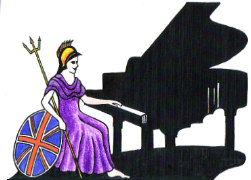Teachers, Accompanists and Piano Entertainers in the UK

UK Piano Page

Madbrook Farm
Warminster Road
Westbury, Wiltshire BA133RB
England
OVER 100 PIANOS IN STOCK ! Sales at our stores in
39 Finch Road
Douglas, Isle of Man IM12PW
England
Peter Norris Music has now been trading for 20
Beverely Way
New Malden
New Malden, London KT3 4PH
England
I am the UK's largest stockist of fully
County Monaghan
Republic of Ireland
Piano Centre is the place for Yamaha and
Under the City Hall
13 Paragon Street
Hull, East Riding of Yorkshire HU1 3NA
England
Gough & Davy was established as a Piano retailer
Music Festival for performers and guests Our 10th
18-06-2022 12:30PM
The Morecambe Bay Piano Group was set up to extend
11-12-2021 01:00PM
The Morecambe Bay Piano Group was set up to extend
08-01-2022 01:00PM
The Morecambe Bay Piano Group was set up to extend
12-02-2022 01:00PM